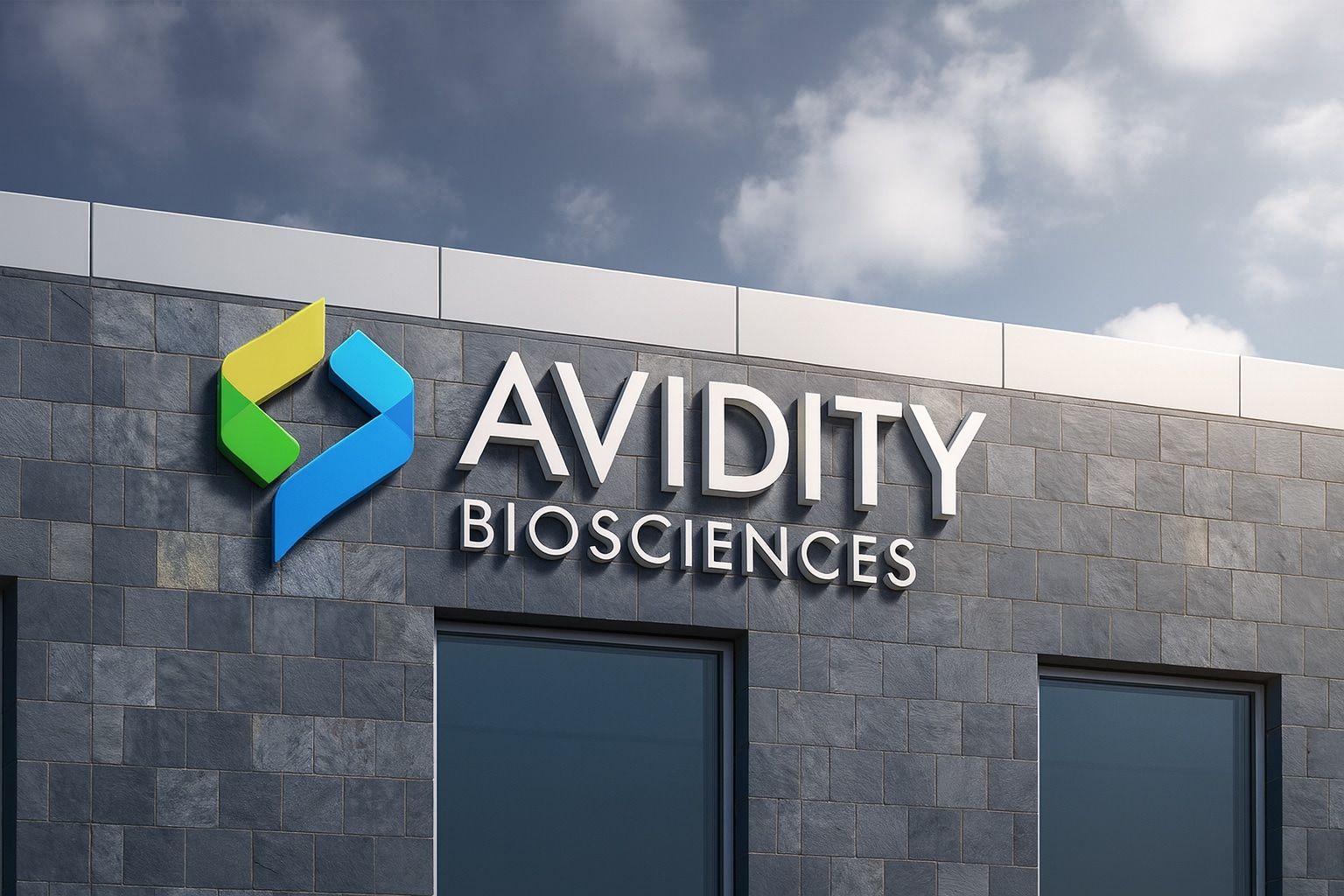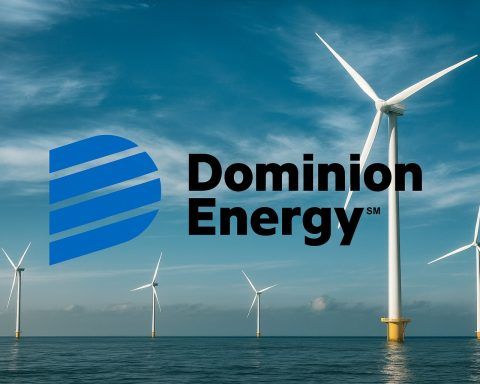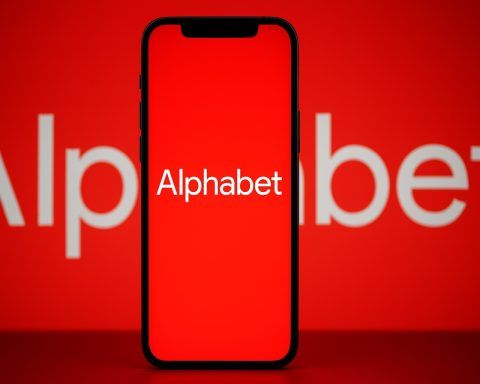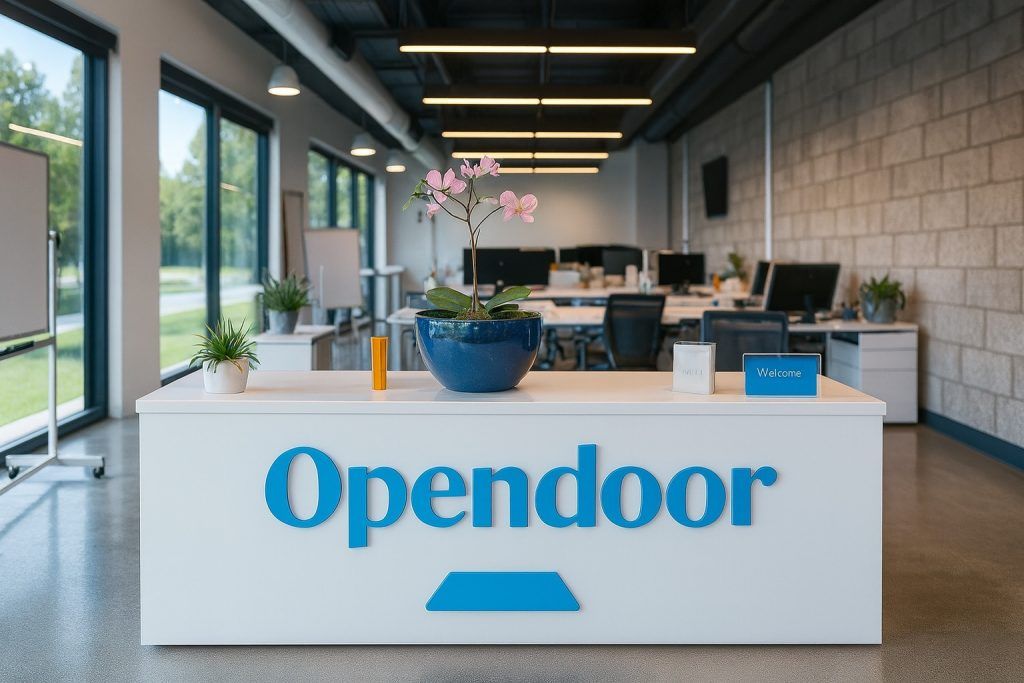- $12B Novartis Buyout: Avidity Biosciences (NASDAQ: RNA) is being acquired by Swiss pharma giant Novartis for $72 per share in cash, a roughly 46% premium to RNA’s last closing price [1]. The all-cash deal, announced Oct. 26, 2025, values Avidity at about $12 billion and is expected to close in the first half of 2026 [2] [3]. Avidity will spin off its early-stage cardiology programs into a new standalone “SpinCo” before the acquisition closes [4], meaning current shareholders will receive $72 cash per share plus shares in the separate SpinCo as additional value [5].
- RNA Stock Surge: RNA stock closed at $49.15 on Friday (Oct. 24) [6] and is expected to jump toward the $72 offer when markets reopen [7]. The buyout caps a dramatic run for Avidity shares – the stock has climbed 40%+ over the past quarter, hitting a 52-week high of $56 earlier in October [8]. It has more than doubled from 52-week lows, fueled by positive trial results and takeover buzz [9]. Notably, shares spiked 23% in one day back in August when initial Novartis rumors surfaced [10].
- Rare Disease Pipeline: Avidity is a leader in RNA therapeutics for rare muscle disorders, with a first-in-class pipeline targeting diseases like Duchenne muscular dystrophy (DMD), facioscapulohumeral muscular dystrophy (FSHD), and myotonic dystrophy type 1 (DM1) [11]. Its lead DMD drug – delpacibart zotadirsen (“del-zota”) – showed breakthrough Phase 1/2 results (boosting dystrophin protein to ~25% of normal levels) [12]. The FDA granted Breakthrough Therapy designation to del-zota in July 2025, and Avidity is “on track” to file for FDA approval (BLA) by the end of 2025 [13]. Additional candidates include delpacibart etedesiran (“del-desiran”) for DM1 (now in a Phase 3 trial) and delpacibart braxlosiran (“del-brax”) for FSHD [14]. All three programs have shown encouraging data – for example, del-brax’s Phase 1/2 trial met key biomarkers and functional endpoints in FSHD patients [15] – positioning Avidity to potentially submit three regulatory approvals in 2025–2026 [16] [17].
- Analyst Buzz & Forecasts: Even before the Novartis bid, Wall Street was bullish on Avidity. The stock carried a “Moderate Buy” consensus rating with an average 12-month price target around $67–$68, implying ~38% upside from last week’s pre-deal price [18]. Analyst price targets ranged from about $50 up to $96 per share, reflecting a mix of views [19] [20]. Back in August, analysts at BMO Capital Markets said a Novartis takeover was “unconfirmed but reasonable,” citing Avidity’s “leadership in muscular RNAi therapies” and pipeline of “first-in-disease… multi-billion dollar opportunities” in neuromuscular disorders [21]. The strong prospects had begun to squeeze out skeptics – short interest in RNA stock, which was over 14% of the float, has been declining as optimism grew [22].
- Financials & Partnerships: As a clinical-stage biotech, Avidity remains unprofitable (TTM EPS ≈ –$3.97 [23]) and generates only minimal revenue from collaborations (just $3.8M in Q2 2025) [24]. Its valuation was driven by future potential: one analysis noted RNA’s price-to-book ratio ~5× (vs ~2.2× industry average), and a discounted cash flow model pegged fair value around $36 – far below the market price [25]. However, Avidity’s financial position is strong. The company held ~$1.2 billion in cash as of mid-2025, providing runway into 2027 [26] for its drug launches. Avidity has also attracted major partners – notably a Bristol Myers Squibb collaboration (expanded in late 2023) to develop Avidity’s AOC platform for cardiovascular diseases. BMS paid $100 million upfront (and equity investment) for rights to five cardiac targets in a deal worth up to $2.3 billion with royalties [27] [28]. (Earlier, in 2019, Eli Lilly also paid $35 million to partner on Avidity’s technology in immunology [29].) These alliances validate Avidity’s platform and have provided non-dilutive capital.
Stock Performance & Recent Trends
Prior to the buyout news, RNA stock had been on a steady uptrend in 2025. The share price more than doubled from the low-$20s a year ago to the high-$40s this month [30]. In the past three months alone, RNA jumped ~40%, fueled by upbeat clinical updates and M&A speculation [31]. The stock hit a 52-week peak of $56 in early October [32] after its lead DMD therapy showed strong results and secured FDA Breakthrough designation. Shares pulled back slightly to around $49 by late October, but remained up 100%+ year-over-year [33].
A major catalyst was the Novartis takeover rumor that broke on August 6, 2025: A Financial Times report revealed Novartis was eyeing Avidity, sending RNA stock up 23% to ~$47 in a single day [34]. That spike marked a turning point – investors began pricing in a potential acquisition premium. In the weeks after, Avidity’s stock oscillated in the upper-$40s as markets awaited either confirmation of a deal or further trial data. By the week of Oct. 23, shares were holding around $49 with relatively low volatility, reflecting the market’s “wait-and-see” stance.
Short-term reaction: With the buyout now official at $72/share, RNA is poised to surge ~46% when trading resumes [35]. In pre-market indications, the stock nearly matched the offer price (common in takeover scenarios where arbitrage traders leave a small discount for deal closure risk). Analysts expect RNA will hover just below $72 per share going forward, reflecting the time value of money until the deal closes and the slim possibility of another bidder emerging [36]. In other words, the market is now treating RNA almost like a done-deal arbitrage play rather than a typical volatile biotech stock [37]. This stability is a stark contrast to earlier in the year, when RNA had double-digit price swings on trial readouts and rumors.
Inside the Novartis Buyout Deal
Novartis’ offer of $72/share in cash underscores the high strategic value it sees in Avidity’s platform. The price represents a 46% premium to Avidity’s last unaffected price and values the company at approximately $12 billion [38]. Novartis announced the agreement on Sunday, Oct. 26, 2025, as part of its strategy to expand in rare genetic diseases [39]. The Swiss pharma will gain all of Avidity’s RNA therapeutics programs for neuromuscular disorders, instantly boosting Novartis’s pipeline in that area. According to Novartis, acquiring Avidity will “bolster [its] portfolio of treatments for rare muscle disorders” and give it a leading RNA delivery platform [40].
Under the deal terms, Avidity will carve out its precision cardiology assets into a separate entity (tentatively called SpinCo) before closing [41]. This means Avidity shareholders won’t be selling those early-stage heart programs – instead, they will receive stock in the new SpinCo in addition to the $72 cash per share from Novartis [42]. It’s effectively a bonus for investors, unlocking extra value from pipeline assets that Novartis opted not to buy. Avidity’s Chief Program Officer, Kathleen Gallagher, is slated to lead SpinCo, indicating continuity for those R&D efforts [43]. For Novartis, excluding cardiology made sense as the company was primarily interested in Avidity’s neuromuscular franchise.
Regulatory and timeline: The acquisition is expected to close in the first half of 2026, pending regulatory approvals and Avidity shareholder consent [44]. Analysts anticipate a smooth approval process – since Novartis and Avidity have virtually no overlapping products, antitrust issues should be minimal [45]. The main closing conditions will be customary due diligence and the successful spin-off of SpinCo. Barring unforeseen obstacles, Novartis will likely integrate Avidity’s operations by mid-2026. Importantly, Avidity’s ongoing clinical trials will continue in the interim. In fact, Novartis has a strong incentive to keep the momentum: positive data readouts in 2025–26 (for DMD, DM1, FSHD programs) would further validate the hefty price tag it’s paying.
Novartis executives have expressed enthusiasm for Avidity’s technology. Novartis CEO Vas Narasimhan praised Avidity’s “pioneering [antibody-oligonucleotide] platform” and its “potentially first-in-class medicines” for devastating neuromuscular diseases [46]. This sentiment was echoed in Novartis’s deal announcement, highlighting that Avidity’s approach – delivering RNA therapeutics via antibody conjugates – could address diseases that were previously unreachable with traditional RNA drugs [47] [48]. By acquiring Avidity, Novartis positions itself at the forefront of muscle-targeted RNA medicine, complementing its other gene therapy endeavors.
Market reaction: The buyout news has been cheered by investors. Avidity’s stock is now effectively “pegged” near the $72 level, locking in a big gain for shareholders. Analysts generally view the deal as a “win-win”: Avidity investors get rewarded with a hefty premium, and Novartis secures a coveted platform that could yield “multi-billion-dollar” blockbuster drugs by 2030 [49]. Avidity’s CEO Sarah Boyce said the Novartis deal “maximizes value for our investors” and will help “expand our pipeline globally” under the resources of a larger company [50]. That suggests Avidity’s management is on board with the acquisition, seeing it as the best path to bring their therapies to patients. There is little expectation of a competing bidder at this point – Novartis’s offer is quite rich, and no rumors of other suitors have surfaced since the August speculation. Thus, most experts anticipate the deal will go through as announced.
Pipeline Progress and Clinical Trials
A key driver of Avidity’s surging valuation has been its AOC (Antibody-Oligonucleotide Conjugate) platform and the clinical success of its lead programs. Avidity’s AOCs use targeted antibodies to deliver therapeutic RNA molecules into muscle cells – a novel approach that overcame the historic challenge of getting oligonucleotide drugs into muscle tissue [51]. The company has three lead candidates in the clinic, each addressing a severe neuromuscular disease with no existing effective treatments:
- Duchenne Muscular Dystrophy (DMD) – Exon 44 Skipping: Avidity’s flagship program delpacibart zotadirsen (“del-zota”) is a first-in-class RNA therapy for DMD patients with mutations amenable to exon 44 skipping. In an early Phase 1/2 trial, del-zota achieved a remarkable biological effect: it increased dystrophin (the missing muscle protein in DMD) to 25% of normal levels [52]. For context, even a small restoration of dystrophin is believed to significantly slow disease progression. Based on these results, the FDA awarded del-zota a Breakthrough Therapy designation in July 2025 [53] – speeding its path to market. Avidity is completing an open-label extension study and remains on track to submit a Biologics License Application (BLA) by end of 2025 for del-zota [54]. If approved, this could become the first-ever RNA therapy for DMD and potentially reach the U.S. market by late 2026. Importantly, del-zota targets a subset (~7%) of DMD patients (exon 44 skip), but its success would validate Avidity’s platform for broader DMD mutations as well.
- Myotonic Dystrophy Type 1 (DM1): Avidity’s DM1 candidate delpacibart etedesiran (“del-desiran”) is an AOC designed to reduce toxic RNA repeats that cause this debilitating muscle disorder. The program faced a challenge in late 2022 when the FDA placed a partial clinical hold on new patient enrollment after a serious adverse event (a known risk with oligonucleotide drugs) [55]. However, Avidity worked closely with regulators to adjust the protocol, and by May 2023 the hold was lifted, allowing trials to resume [56] [57]. Fast-forward to 2025: del-desiran has made significant progress. Enrollment was completed in a Phase 3 pivotal trial (HARBOR) in mid-2025 [58], and Avidity is collecting long-term extension data (MARINA-OLE) to evaluate safety and sustained efficacy [59]. The company expects to share new DM1 clinical data in Q4 2025 (including functional outcomes for patients on therapy) [60]. If results remain positive, Avidity plans to seek regulatory approvals for del-desiran in 2026 across the U.S., EU, and Japan [61]. Given DM1 has no approved disease-modifying treatments, this AOC has a clear path if it proves effective and safe.
- Facioscapulohumeral Muscular Dystrophy (FSHD): The third program, delpacibart braxlosiran (“del-brax”), targets FSHD – a rare genetic muscle disorder that leads to progressive weakness. In June 2025, Avidity announced impressive Phase 1/2 results for del-brax: treated patients showed improvements in muscle function and quality-of-life measures compared to placebo, along with significant reductions in key disease biomarkers (such as DUX4-regulated genes and creatine kinase) [62] [63]. These data suggest del-brax is hitting its molecular target and translating to clinical benefit. The FDA has agreed on both accelerated and full approval pathways for this drug [64]. Encouraged by the outcomes, Avidity has already launched a Phase 3 trial (“FORTITUDE-3”) of del-brax at the optimal dose, aiming to confirm efficacy in a larger patient population [65]. The company plans a BLA submission for del-brax by late 2026 (potentially via accelerated approval using biomarker evidence) [66]. If timelines hold, Avidity could see del-brax approved in 2027, making it the first therapy for FSHD.
Collectively, these three programs could dramatically change Avidity’s fortunes. The company projects the potential for “three successive launches starting in 2026” – an unusually rapid progression for a biotech that had no approved drugs as of 2025 [67]. Of course, this aggressive timeline assumes clinical success and smooth regulatory reviews. Novartis was undoubtedly attracted by this late-stage pipeline, seeing an opportunity to fold these first-in-class therapies into its portfolio. It’s worth noting that Avidity’s focus on rare neuromuscular diseases also aligns with favorable market conditions (high unmet need, orphan drug incentives, premium pricing potential for new therapies).
Beyond the lead trio, Avidity has a broader pipeline leveraging its AOC platform. The company has multiple preclinical programs in various neuromuscular and muscle wasting disorders [68]. It is also advancing two precision cardiomyopathy candidates (which will reside in the SpinCo post-acquisition) and exploring applications in immunology with partners [69]. This robust R&D portfolio means that even after the first wave of approvals, a second wave of pipeline assets could follow in subsequent years – a fact that likely made Avidity even more attractive to Novartis for the long term.
Partnerships and Collaborations
Avidity’s innovative science has drawn the interest of multiple pharmaceutical partners over the years, providing validation and funding. The most prominent collaboration is with Bristol Myers Squibb (BMS). In 2021, Avidity teamed up with MyoKardia (a BMS subsidiary) to explore AOCs in heart muscle, and in November 2023 BMS greatly expanded this partnership [70] [71]. BMS agreed to pay $100 million upfront (plus a $40M equity investment) for the option to develop up to five cardiovascular targets using Avidity’s AOC platform [72] [73]. Milestones in the deal could total a whopping $2.3 billion and include royalties if products reach market [74]. This BMS-Avidity alliance, focused on serious cardiovascular diseases, underscored the broad potential of Avidity’s technology beyond muscle disorders. The news of BMS’s investment even sent Avidity’s stock soaring ~35% when announced [75], a testament to how meaningful the partnership was for the company’s prospects.
Another early partnership was with Eli Lilly. Back in 2019, Lilly inked a deal with Avidity for its immunology applications, paying $35 million upfront for licensing and R&D collaboration [76]. That partnership aimed to harness Avidity’s AOCs to deliver therapies in immunological diseases. While details on the Lilly programs are scarce (and no clinical candidates have been disclosed publicly from that collaboration), it served as a validation at a formative time for Avidity, and Lilly remains a stakeholder in Avidity’s success.
Avidity has also partnered with academic institutions and patient organizations to accelerate its research in rare diseases. For instance, the company works closely with the Myotonic Dystrophy Foundation and FSHD advocacy groups to design patient-centered trials. These collaborations ensure that Avidity’s development programs align with patient needs and regulatory expectations for such rare conditions.
Finally, it’s notable that Novartis itself had a form of partnership with Avidity prior to the acquisition – albeit indirectly. In mid-2023, Novartis’s venture arm and Flagship Pioneering launched a startup (ProFound Therapeutics) and struck a deal with Novartis to explore new drug targets, including in cardiovascular RNA therapeutics [77]. While Avidity was not directly involved in that, it shows Novartis’s strategic interest in the broader field. Now, by outright buying Avidity, Novartis secures full ownership of one of the most advanced platforms in muscle-targeted RNA medicine, rather than continuing with smaller-scale collaborations.
Analyst Insights and Stock Forecasts
Prior to the buyout, analysts were already upbeat about Avidity’s trajectory – and Novartis’s bid appears to vindicate those expectations. Analyst coverage on Avidity consisted of mostly buy recommendations, reflecting optimism around its platform and clinical results. According to MarketBeat, the consensus rating for RNA was a “Moderate Buy,” with 17 out of 17 analysts issuing Buy ratings (no holds or sells) [78]. The average 12-month price target stood around $67.8 per share [79], which was nearly 38% above the stock’s pre-rumor price of ~$49 [80]. Price targets among analysts ranged from roughly $50 on the low end to $96 at the high end [81] [82], showing that while all saw upside, the degree of optimism varied. Some bullish analysts clearly anticipated either outsized success in trials or a takeover at a hefty premium – the latter essentially came true with Novartis’s $72 offer.
One of the most vocal bulls was BMO Capital Markets, which after the August takeover rumors commented that an acquisition of Avidity would be quite logical. In a note to investors, BMO analysts said the rumors were “unconfirmed but reasonable,” arguing that Avidity represented an attractive target for Novartis given its “leadership in muscular RNAi therapies” and “two first-in-disease…multi-billion dollar opportunities” in its pipeline [83]. In other words, BMO believed Avidity’s DMD and DM1 programs alone could each become blockbuster franchises if successful. BMO also highlighted that Avidity’s drug candidates target high unmet needs with no disease-modifying treatments – meaning commercial rewards could be significant for the first effective entrant [84]. This bullish thesis now seems validated by Novartis’s willingness to pay top dollar.
Even analysts who focused on fundamentals acknowledged that Avidity’s true value lay in its future potential. There were some cautionary views – for example, Simply Wall St (an investment research site) modeled Avidity’s intrinsic value at around $36/share based on its cash flows and assets, implying the stock was overvalued by traditional metrics [85]. However, such fundamental models often don’t capture the strategic value of a platform technology. In this case, Novartis paying 2× that “fair value” ($72 vs $36) [86] underscores that big pharma is pricing in the transformational potential of Avidity’s AOCs.
Short interest was another indicator of sentiment. Earlier in 2025, Avidity had a significant number of skeptics – more than 14% of its float was sold short (betting on price decline) [87], likely due to concerns around the partial clinical hold and the company’s high cash burn. However, as positive news rolled in – the FDA lifting the DM1 trial hold, strong DMD data, the BMS deal, etc. – many shorts started covering their positions. By October, short interest had eased, and those remaining were taking on considerable risk given the looming M&A rumors. In fact, any short sellers still on the sidelines got burned by the Novartis announcement, as the stock’s jump toward $72 would trigger heavy losses for anyone betting against Avidity.
Looking ahead, most analysts see Novartis’s acquisition as a bullish outcome for Avidity’s science, albeit one that caps the upside for RNA stock itself (since it will cease trading once the deal closes). For example, analysts at RBC and Evercore (who had Outperform ratings on RNA) have noted that under Novartis’s wing, Avidity’s drugs will have greater resources and global reach, potentially accelerating their path to patients. This could increase the ultimate commercial value of the drugs – benefiting Novartis shareholders in the long run. For Avidity’s investors, the consensus is that accepting $72 in cash is an excellent return, given the company’s standalone risks and the typical volatility in biotech. In essence, Wall Street is applauding this deal as the culmination of Avidity’s rapid rise, with one analyst calling it “a fairy-tale ending for early investors who believed in RNA therapeutics for rare diseases.” (It’s worth noting Avidity went public in mid-2020 around $18/share – so $72 represents a 4x increase in about five years, vastly outperforming biotech indices in that period.)
Technical & Fundamental Analysis
From a technical analysis standpoint, RNA had been exhibiting bullish signals in the months leading up to the acquisition. The stock consistently traded above key moving averages (50-day and 200-day), confirming an upward trend [88]. Momentum indicators like the RSI hovered in positive territory but not extreme overbought levels, suggesting steady accumulation by investors rather than a speculative spike. The breakout to a 52-week high of $56 in October came on high trading volume, indicating broad conviction in the stock’s prospects. Even before the buyout, traders viewed any dips in RNA as buying opportunities, given the strong news flow from trials. Volatility was high by market standards (not unusual for a biotech with no revenues), but the overall trend was one of higher highs and higher lows through 2025.
On fundamentals, Avidity’s valuation always rested on future potential rather than current financials. The company’s Q2 2025 earnings highlight this: Avidity posted only $3.8 million in collaboration revenue (from its BMS partnership) [89], against $138 million in R&D expenses for the quarter [90]. Net loss for Q2 was approximately $157 million [91], and trailing 12-month EPS was about –$3.97 [92]. These figures underscore that Avidity, like most clinical-stage biotechs, was burning cash to advance its pipeline, with profitability likely years away (post-2026 if all goes well). Traditional valuation metrics appeared sky-high: for instance, at $49/share, Avidity’s market cap was about $6.7 billion [93], which meant a price-to-book ratio ~5 (given ~$1.2B in equity) – much higher than the biotech industry average ~2 [94]. Its enterprise value to revenue was off the charts due to negligible sales. By those metrics, skeptics argued the stock was overvalued.
However, biotech investors often use risk-adjusted NPVs (net present value) of pipelines to justify valuations. In Avidity’s case, even a single successful drug like del-zota for DMD could feasibly become a blockbuster (>$1B/year in revenue) given the high unmet need and orphan pricing. Sell-side analysts modeling Avidity’s DMD, DM1, and FSHD programs likely arrived at valuations well above $6-7B when assuming high probabilities of success (especially after the positive early data). Novartis’s $12B bid essentially confirms that Avidity’s pipeline was indeed as valuable as bullish models suggested – perhaps even more, considering Novartis will also inherit the technology platform for future indications. In that sense, while Avidity’s fundamentals (revenue/earnings) were weak, its fundamentals in terms of intellectual property and clinical data were very strong. Big Pharma like Novartis can afford to pay a premium now and monetize these assets over the coming decade, leveraging their commercialization capabilities.
One noteworthy fundamental strong point: Avidity’s cash reserves. The company had around $1.2 billion in cash and marketable securities as of June 30, 2025 [95], after raising ~$185M from an ATM stock offering in July [96]. This war chest meant Avidity was funded through mid-2027 for its operations [97], reducing the need for dilutive financing. In fact, Avidity’s CFO emphasized they were preparing for potential product launches with this capital [98] [99]. The strong balance sheet put Avidity in a position of negotiating power – it didn’t have to accept a lowball offer. The $72/share deal therefore likely reflects a price that both Avidity’s board and Novartis found reasonable, given Avidity was not under financial duress.
In summary, while naive fundamentals made RNA stock look expensive, sophisticated analysis factoring pipeline potential made it look undervalued – and the latter view won out. The takeover premium pushed Avidity’s valuation to a level that few would have envisioned a year ago, but one that now seems justified by the company’s remarkable scientific progress and big pharma’s appetite for innovation.
Outlook and What’s Next
With the acquisition announcement, Avidity Biosciences has entered its endgame as an independent company. Here’s what to watch for going forward:
- Shareholder Approval and Closing: Avidity will schedule a shareholder vote on the Novartis deal (likely by Q1 2026). Given the 46% premium, approval is expected to be a formality – major shareholders (including venture backers and institutions) will be hard-pressed to find a better alternative in the near term. If approved, the deal should close in H1 2026 after regulatory review. Avidity stock (RNA) will then cease trading on NASDAQ, and investors will receive $72 per share in cash for their holdings (usually within a few days of closing). The SpinCo shares will be distributed around the same time, though details (timing, SpinCo ticker, etc.) have yet to be announced [100] [101]. We do know SpinCo will contain Avidity’s two preclinical cardiomyopathy programs and possibly some early research assets, and it will operate as a separate public biotech focused on genetic cardiology.
- Near-Term Trading: Until the deal closes, RNA shares will likely trade just below $72 – perhaps in the $70-$71 range – reflecting the small risk and time delay before deal completion [102]. This is common in cash acquisitions. Barring any surprise negative developments (e.g. a major clinical setback with Avidity’s drugs, or an unforeseen regulatory issue), arbitrage traders will keep the price close to the offer value. If another bidder were to emerge (considered unlikely), that could drive the stock even higher, but no alternate offers have been hinted. Conversely, if for some reason the deal faces trouble, the stock could drop back toward pre-rumor levels – but again, no such signs are evident.
- Continued News Flow: Importantly, Avidity is still expected to report new clinical results in late 2025 and early 2026 from its ongoing trials. For example, top-line Phase 2 data for del-zota in DMD and long-term DM1 data are slated for Q4 2025 [103] [104]. Positive results could serve as a “last hurrah” for Avidity as a public entity, and they will also be meaningful for Novartis as the future owner. If the data are exceptional, it might reinforce the wisdom of Novartis’s purchase (and conversely, any surprises will become Novartis’s problem to manage). Investors holding RNA through the deal closure will want to stay informed on these readouts, as they could theoretically impact sentiment or the slim chance of a competing bid. Novartis will also likely provide updates on the SpinCo (leadership, capitalization, strategy) before the deal closes, so that Avidity shareholders know what they’re getting in that new company.
- Big Pharma Integration: Once Avidity joins Novartis, the focus shifts to how effectively Novartis can integrate and advance the pipeline. Novartis has a track record with such integrations – for instance, it acquired gene therapy specialist AveXis in 2018 and successfully brought its SMA gene therapy to market. For Avidity’s programs, Novartis will deploy its sizable resources in clinical development, regulatory affairs, and global marketing. This could potentially accelerate timelines (e.g., running trials in parallel in more countries) and expand the scope of Avidity’s platform. Novartis has also been investing in RNA and gene therapies (it bought Kate Therapeutics in 2024, which was developing gene therapy for muscular dystrophy [105]), indicating a long-term commitment to this field. We may see Novartis initiate new AOC programs beyond what Avidity had planned, leveraging the technology in other diseases – something Avidity as a smaller company might not have had bandwidth to do.
For investors, an important consideration is that future upside in Avidity’s science will accrue to Novartis stockholders. Post-deal, those who want to participate in the success of del-zota or del-brax will have to own Novartis (NYSE: NVS) shares, as RNA stock will be gone. Novartis itself is a large, diversified pharmaceutical company, so Avidity’s assets will be one part of a much bigger puzzle. Some Avidity investors may choose to roll their gains into Novartis stock to “stay on the ride,” while others may take the cash windfall to invest elsewhere (possibly even rotating into other promising small biotechs).
Broader sector impact: The Avidity acquisition is also reverberating across the biotech industry. It reinforces a trend of big pharma snapping up innovative biotechs to fill their pipelines. In 2025 alone, Novartis has spent heavily – $3.1B for Anthos (cardiovascular), $1.7B for Regulus (kidney disease), $1.4B for Tourmaline (autoimmune) [106], and now $12B for Avidity (neuromuscular RNA) [107]. Other pharma giants like Pfizer, Merck, and Roche have also been active acquirers. This environment is boosting valuations of peer companies. For example, Dyne Therapeutics (NASDAQ: DYN), a rival in muscle-targeted RNA drugs, has seen its stock explode ~75% in the past six months amid its own trial successes and takeover speculation [108]. Analysts are openly speculating that after Avidity, “Who’s next?” – with names like Dyne and even larger RNA players like Ionis Pharmaceuticals floated as possible targets [109]. In short, Avidity’s story is encouraging investors that the next generation of RNA therapeutics holds tremendous value, and big pharma is willing to pay for it. This bodes well for innovation in the sector, as robust M&A interest ultimately funnels more capital into biotech R&D.
Conclusion
Bottom line: Avidity Biosciences’ rapid ascent – from developing a groundbreaking RNA delivery technology to striking a $12B buyout – marks a major biotech success story. The stock is set to rocket higher on the Novartis acquisition, rewarding believers who supported Avidity’s vision [110]. Novartis’s high-premium offer underscores the massive medical and commercial value tied up in treating rare neuromuscular diseases [111]. It also signals that big pharma’s spending spree on innovative platforms is not slowing down [112]. For Avidity’s part, while its chapter as an independent company is closing, the upside is that its novel AOC treatments may reach patients faster and on a global scale under Novartis’s umbrella [113]. Investors now await the deal’s finalization and details on the SpinCo spinoff, but the hard part is over – Avidity delivered breakthrough science and attracted a top-tier buyer. In the end, Avidity’s journey from a small RNA startup to a multibillion-dollar acquisition is a testament to the promise of biotech innovation. It’s a reminder that in the biotech arena, big risks can lead to big rewards, and today Avidity’s shareholders are seeing the payoff.
Sources: Avidity Biosciences & Novartis press releases; Reuters [114] [115]; BioSpace [116] [117]; Company financial reports [118] [119]; TechStock²/ts2.tech [120] [121] [122].
References
1. www.reuters.com, 2. ts2.tech, 3. ts2.tech, 4. ts2.tech, 5. ts2.tech, 6. ts2.tech, 7. ts2.tech, 8. ts2.tech, 9. ts2.tech, 10. www.reuters.com, 11. ts2.tech, 12. www.biospace.com, 13. www.biospace.com, 14. www.biospace.com, 15. www.prnewswire.com, 16. www.prnewswire.com, 17. www.prnewswire.com, 18. ts2.tech, 19. www.marketbeat.com, 20. www.marketbeat.com, 21. www.biospace.com, 22. ts2.tech, 23. www.aaii.com, 24. www.prnewswire.com, 25. ts2.tech, 26. www.prnewswire.com, 27. www.biospace.com, 28. www.biospace.com, 29. www.aviditybiosciences.com, 30. ts2.tech, 31. ts2.tech, 32. ts2.tech, 33. ts2.tech, 34. www.reuters.com, 35. www.reuters.com, 36. ts2.tech, 37. ts2.tech, 38. www.reuters.com, 39. www.reuters.com, 40. www.reuters.com, 41. ts2.tech, 42. ts2.tech, 43. www.reuters.com, 44. ts2.tech, 45. ts2.tech, 46. ts2.tech, 47. www.prnewswire.com, 48. www.prnewswire.com, 49. ts2.tech, 50. ts2.tech, 51. www.prnewswire.com, 52. www.biospace.com, 53. www.biospace.com, 54. www.biospace.com, 55. cureduchenne.org, 56. www.neurologylive.com, 57. www.aviditybiosciences.com, 58. www.prnewswire.com, 59. www.prnewswire.com, 60. www.prnewswire.com, 61. www.prnewswire.com, 62. www.prnewswire.com, 63. www.prnewswire.com, 64. www.prnewswire.com, 65. www.prnewswire.com, 66. www.prnewswire.com, 67. www.prnewswire.com, 68. www.biospace.com, 69. www.prnewswire.com, 70. www.biospace.com, 71. www.biospace.com, 72. www.biospace.com, 73. www.biospace.com, 74. www.biospace.com, 75. www.biospace.com, 76. www.aviditybiosciences.com, 77. www.biospace.com, 78. www.marketbeat.com, 79. www.marketbeat.com, 80. www.marketbeat.com, 81. www.marketbeat.com, 82. www.marketbeat.com, 83. www.biospace.com, 84. www.biospace.com, 85. ts2.tech, 86. ts2.tech, 87. ts2.tech, 88. ts2.tech, 89. www.prnewswire.com, 90. www.prnewswire.com, 91. www.gurufocus.com, 92. www.aaii.com, 93. www.reuters.com, 94. ts2.tech, 95. www.prnewswire.com, 96. www.prnewswire.com, 97. www.prnewswire.com, 98. www.prnewswire.com, 99. www.prnewswire.com, 100. ts2.tech, 101. ts2.tech, 102. ts2.tech, 103. www.biospace.com, 104. www.prnewswire.com, 105. www.reuters.com, 106. ts2.tech, 107. ts2.tech, 108. ts2.tech, 109. ts2.tech, 110. ts2.tech, 111. ts2.tech, 112. ts2.tech, 113. ts2.tech, 114. www.reuters.com, 115. www.reuters.com, 116. www.biospace.com, 117. www.biospace.com, 118. www.prnewswire.com, 119. www.prnewswire.com, 120. ts2.tech, 121. ts2.tech, 122. ts2.tech





